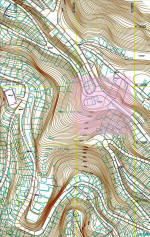Program Requirements
Last semester, we designed disaster relief housing in the light of needs for emergency shelters that can be transported to remote locations in short time using shipping containers. This semester, we try a similar project with a slightly different approach.
As the recent disasters reveal, emergency shelters, medical facilities, restoration of the infrastructure, etc. are naturally the immediate needs for the areas suffered the disasters in any location. However, it is also a fact that different parts of the world have fundamental differences in recovering from such problems. Recovering from such disaster is particularly difficult in the social and economical disadvantaged areas. Moreover, many of these places have living conditions that may not be acceptable even without the natural disaster.
In this exercise the hypothetical site is in South America. Although we are using a particular site in Venezuela for this project, a number of countries and cities face similar challenges. Natural disasters may trigger urgency to rebuild but often they also reveal poor existing conditions. In Caracas and many cities in South America, there are many slums constructed on poor foundations, wall systems, roofs, interior, etc and some often without adequate infrastructures such as water, electricity and sewage. (See previous project sample.)
Both Design I and II are to explore the use of modular design and construction system. Prefabricated units are to be constructed off site and brought to be assembled on site. One possibility of achieving such design concept is to use Shipping Containers. They can be transported to anywhere in the world in a variety of methods having universal dimensions, 8’-0” wide, 8’-6” high and 20’-0” and/or 40’-0” in length. (See Fall 2005, Project #2) Other method is to construct prefabricated or semi-fabricated elements in remote place using modular system. Suggested basic module is 10’x10’x10’.
Design I – Housing Prototype
- Living Room: 400 SF
- Dining or Breakfast Area: 150 SF
- Kitchen: 150 SF (Min.)
- MBR: 300 SF with own Bathroom (100 SF) and Walk-in Closet (100 SF)
- (2) BR: 200 SF Each with Closet (50 SF)
- (2) Bathrooms: 100 SF (Each)
- Laundry/Utility RM: 100 SF
- Mechanical RM: 100 SF
- Storage: 200 SF (Total)
- Extra Family RM, Exterior Poach/Garden, Roof Deck/Balcony, etc. are optional but recommended.
- Parking Garage or Space is not required.
Design II – Public School, Grades 1 to 8
§ (8) Classrooms: 400 SF (each) 20’x20’
§ (8) Storage for each classroom: 100 SF (each)
§ Multi-purpose RM: 800 SF
§ Multi-purpose RM Storage: 200 SF
§ Lunch RM: 800 SF
§ Kitchen/Pantry: 400 SF
§ Boy’s/Girl’s Bathrooms: 200 SF (each)
§ Teachers Office: 400 SF
§ Teachers Lounge: 200 SF
§ Principal/Admin Office: 200 SF
§ Security/Maintenance Office: 200 SF
§ (2) Teacher’s Bathroom: 100 SF (each)
§ Unisex ADA Toilet: 80 SF
§ Janitor’s Closet: 20 SF
§ Mech/Elect RM: 200 SF
§ Outdoor Play Ground: 10,000 SF
